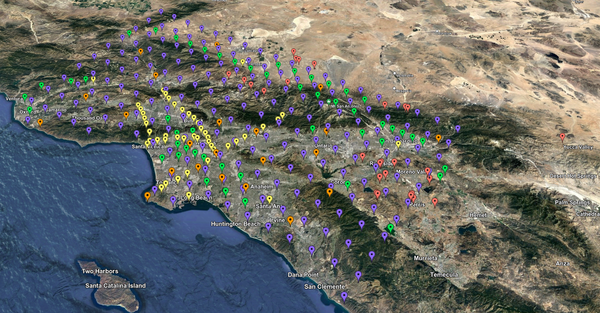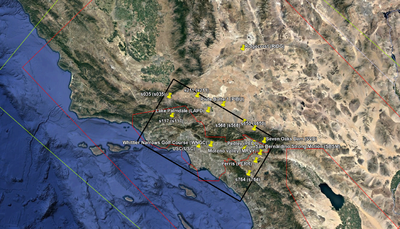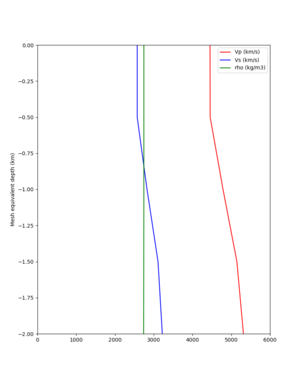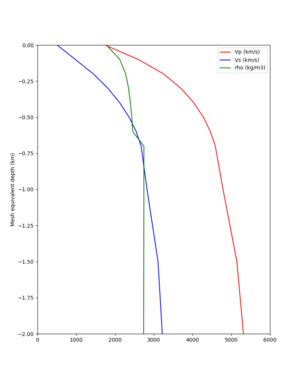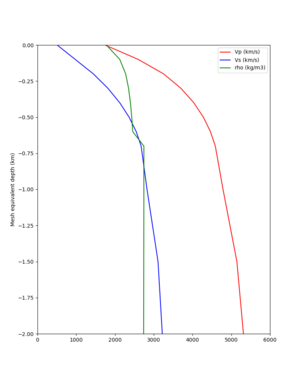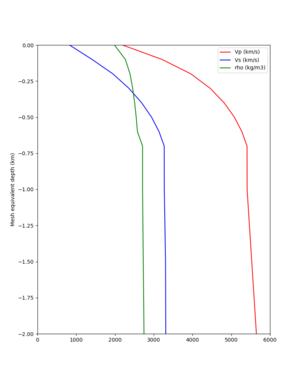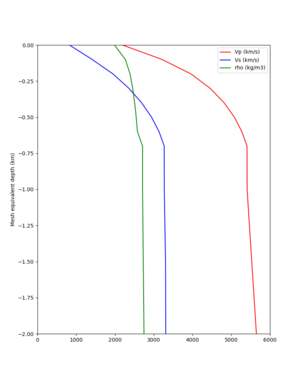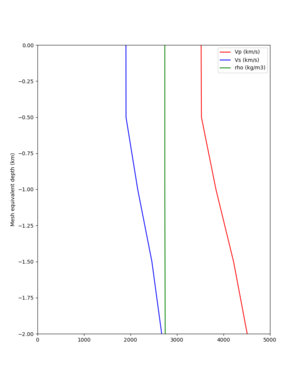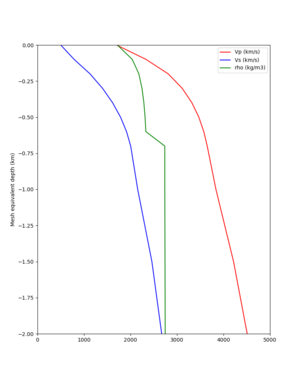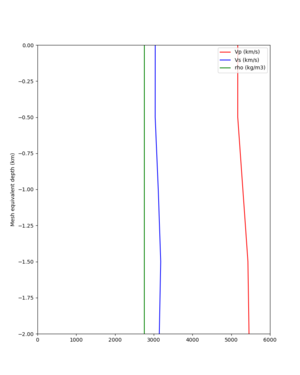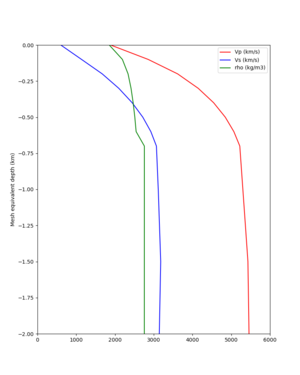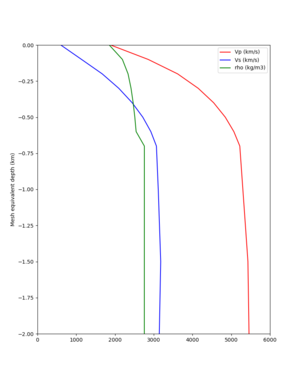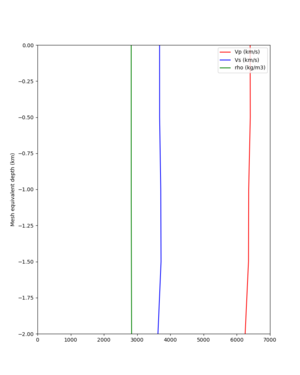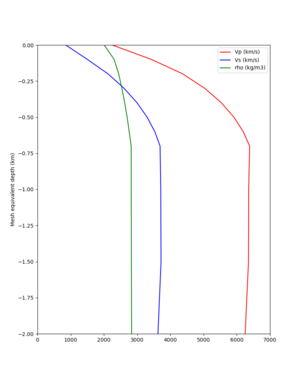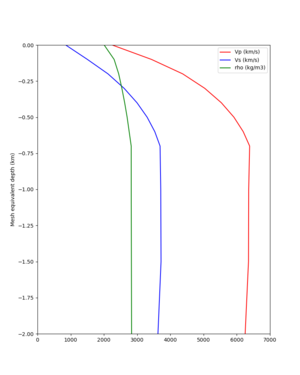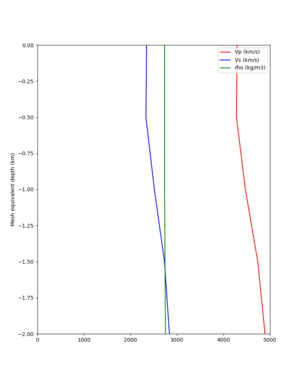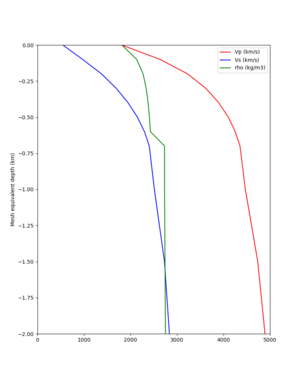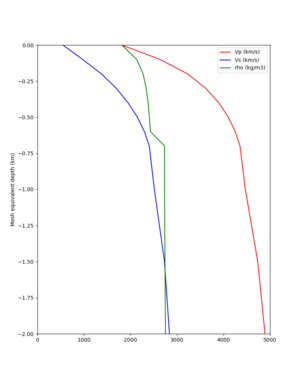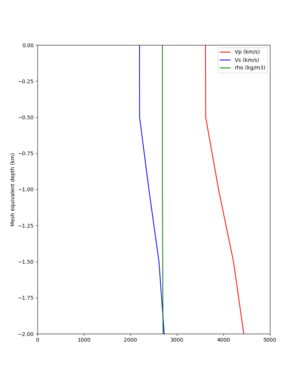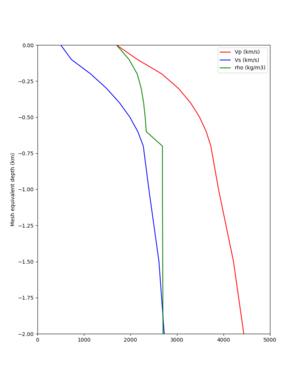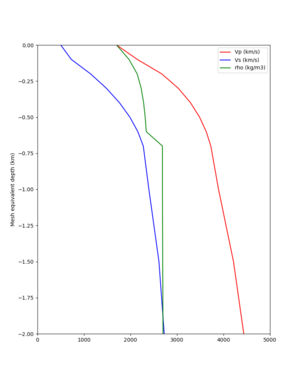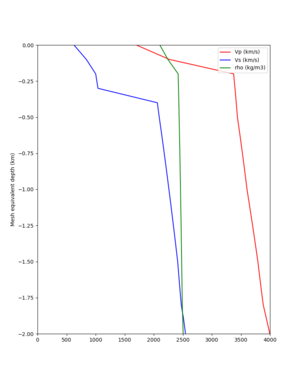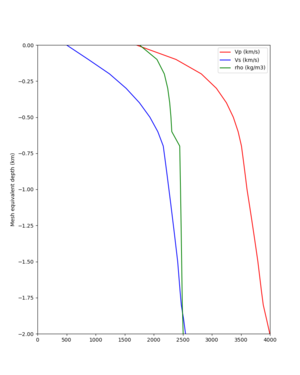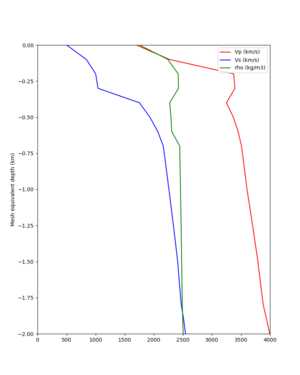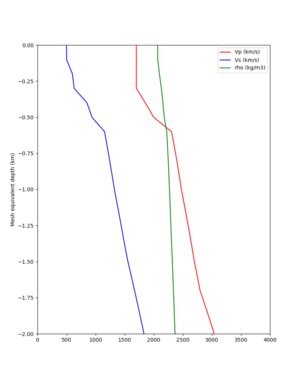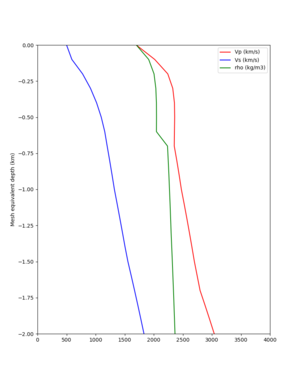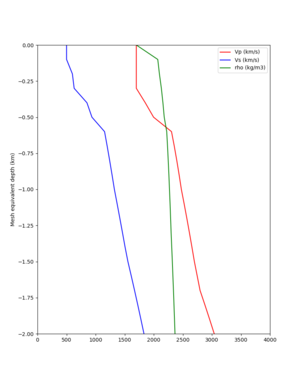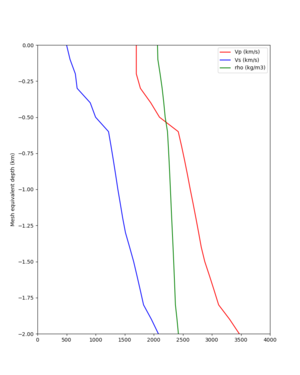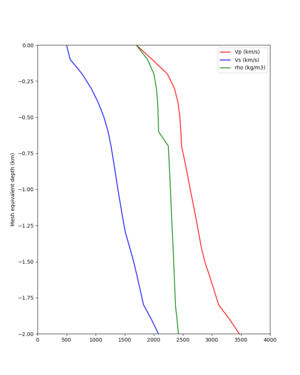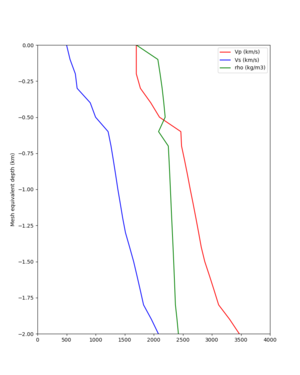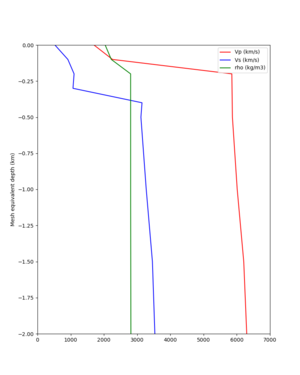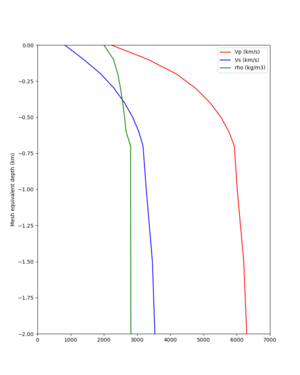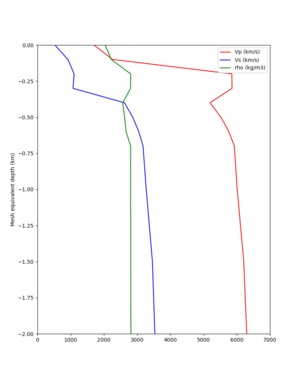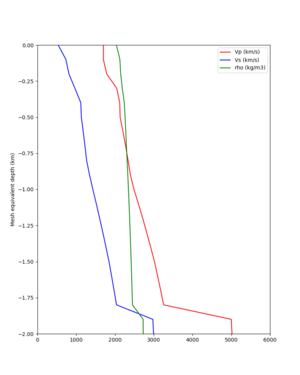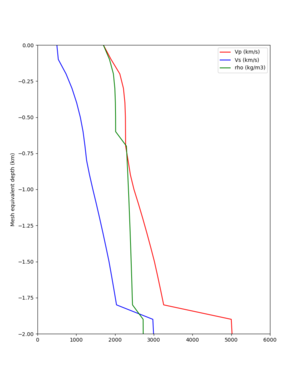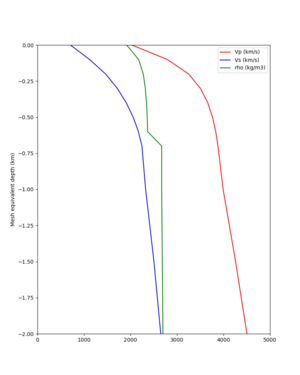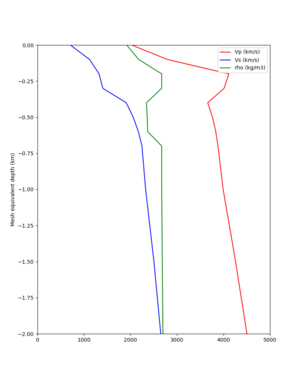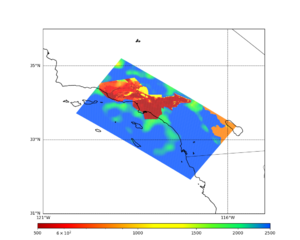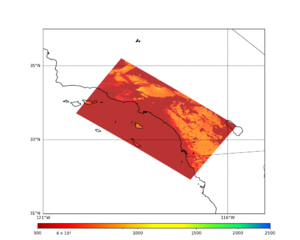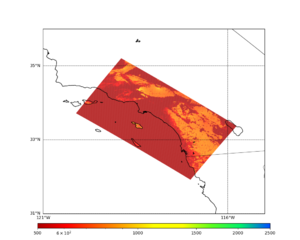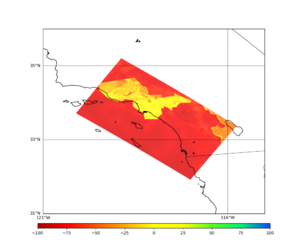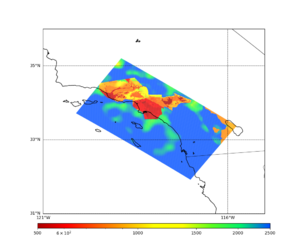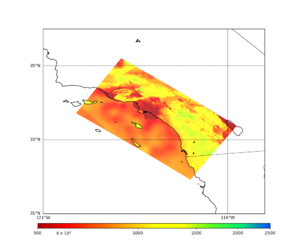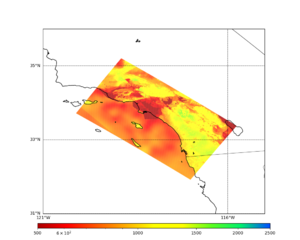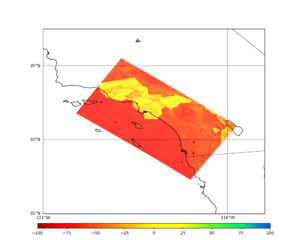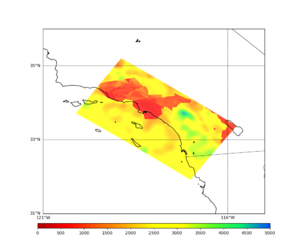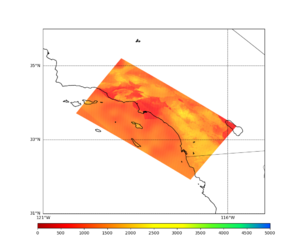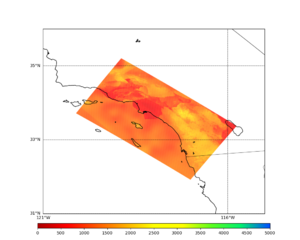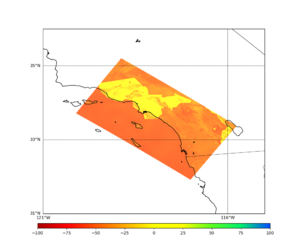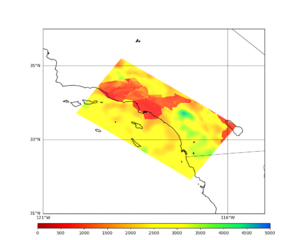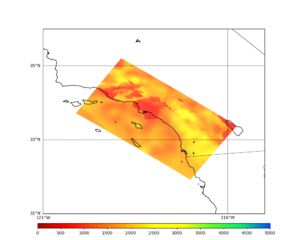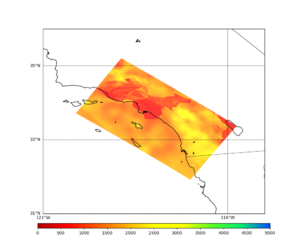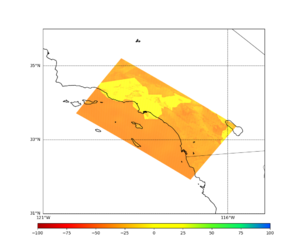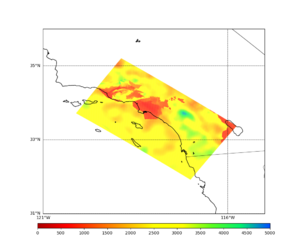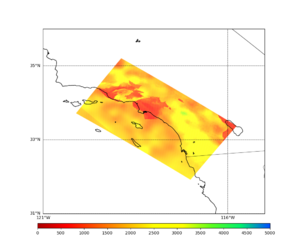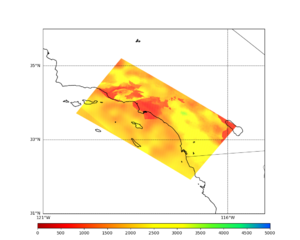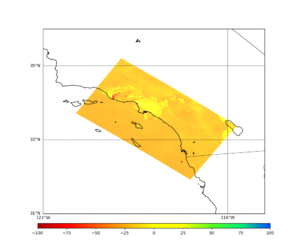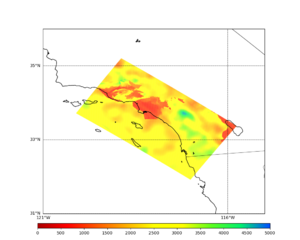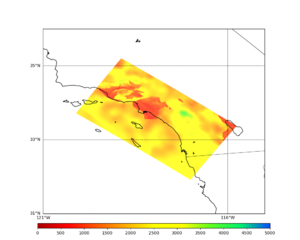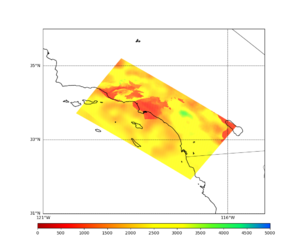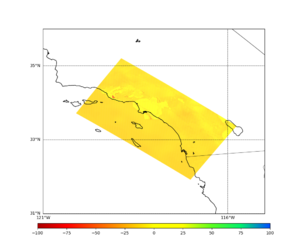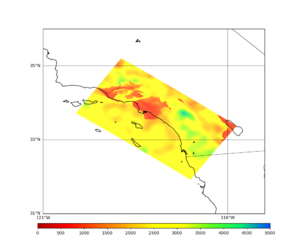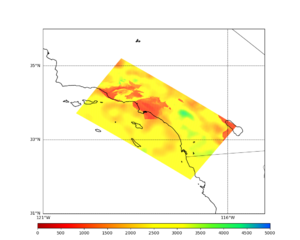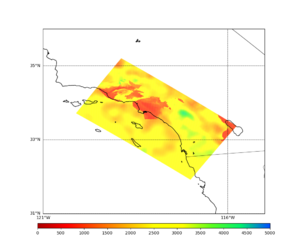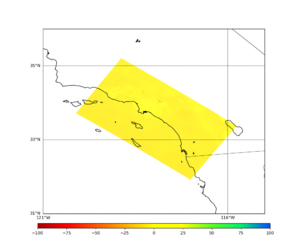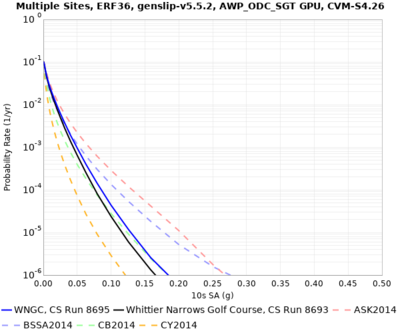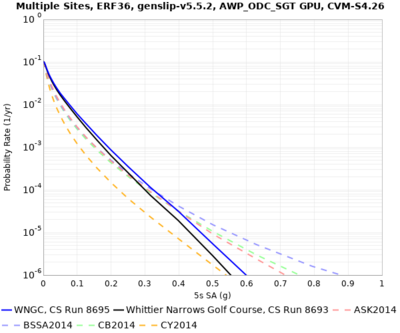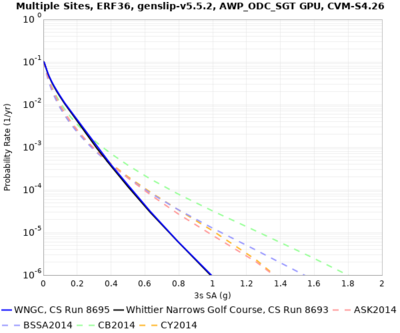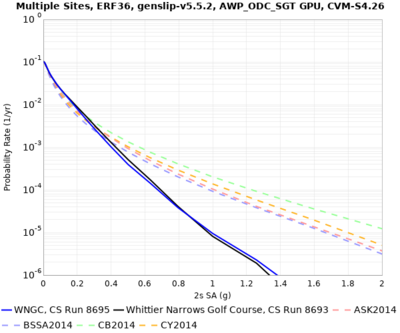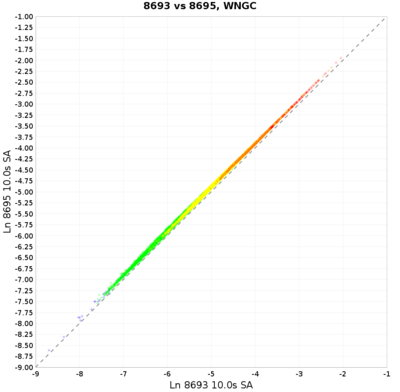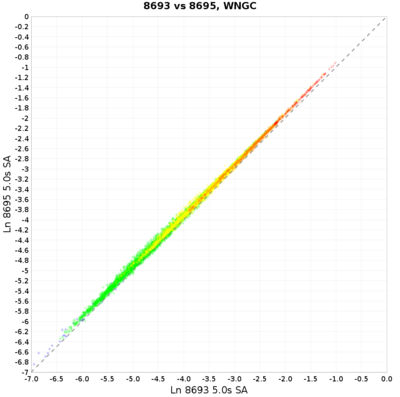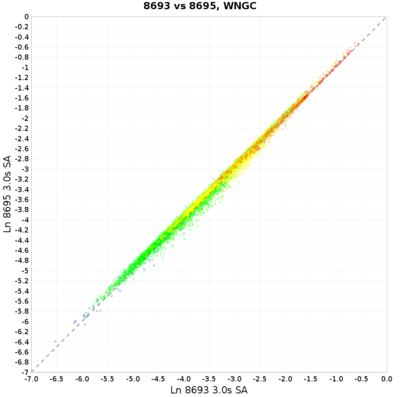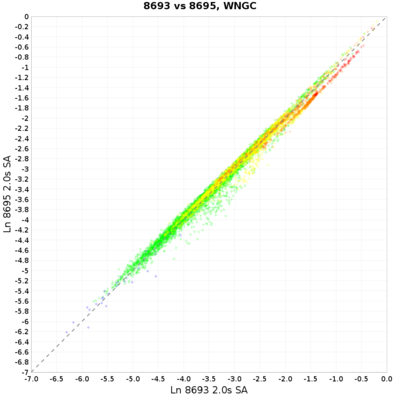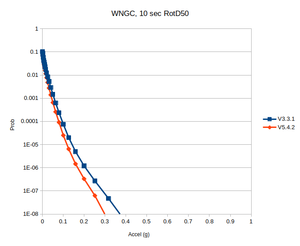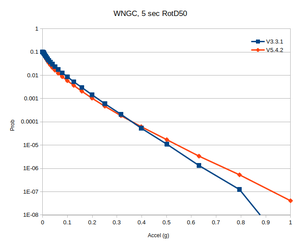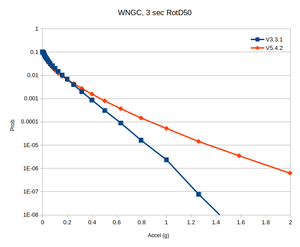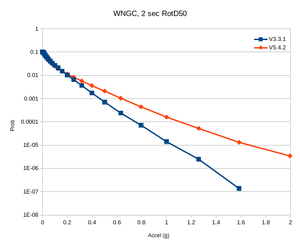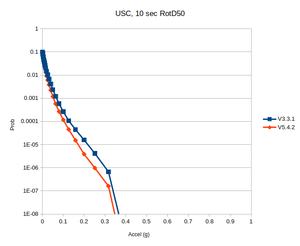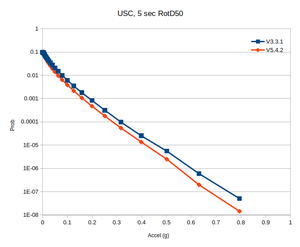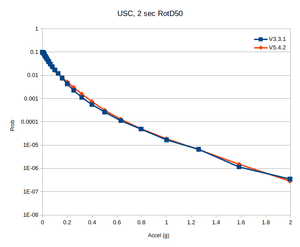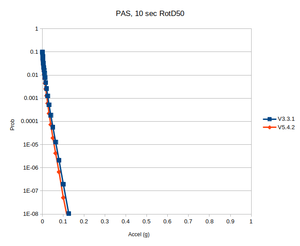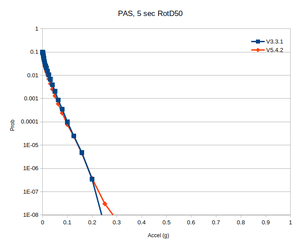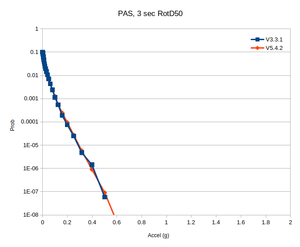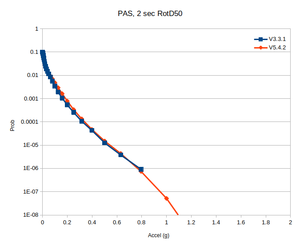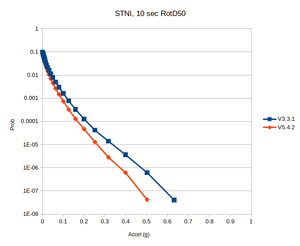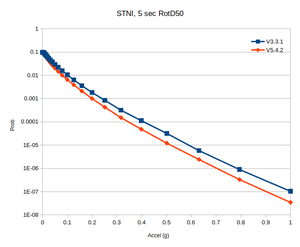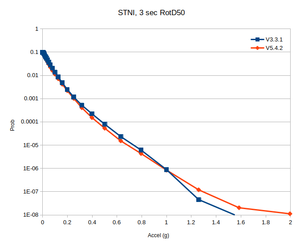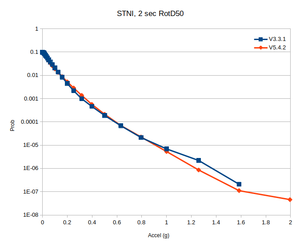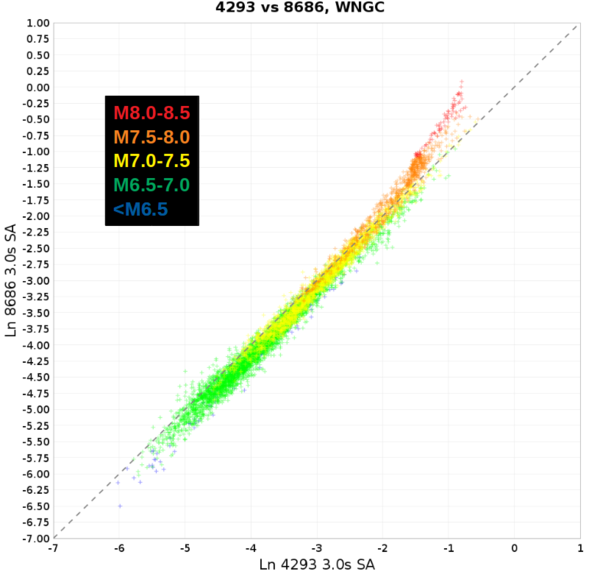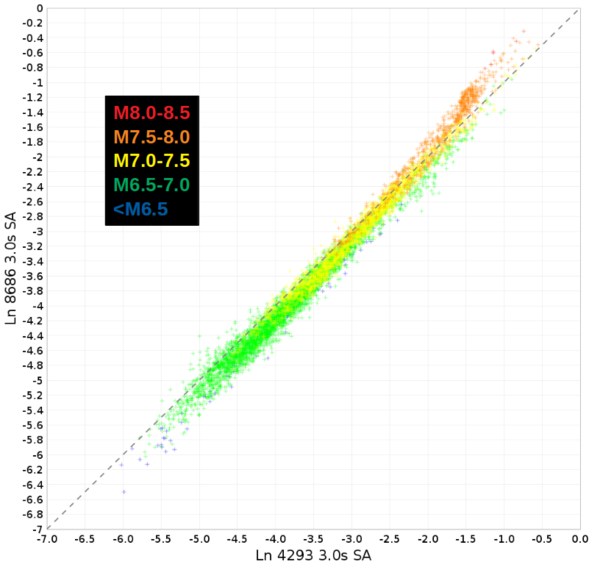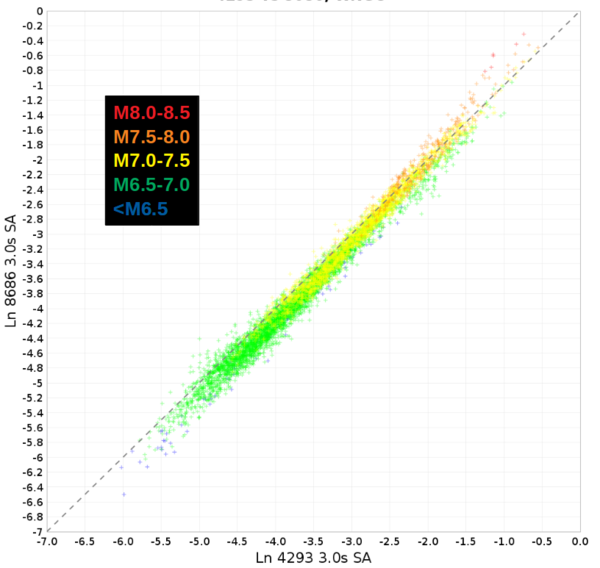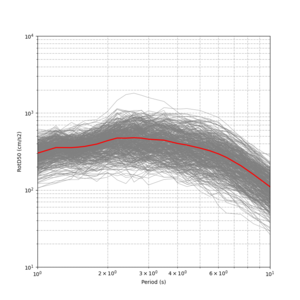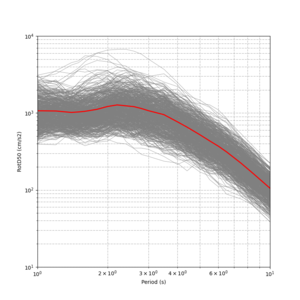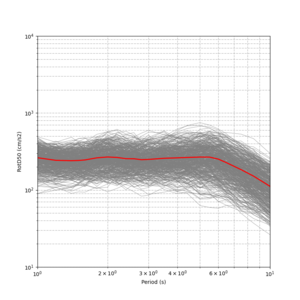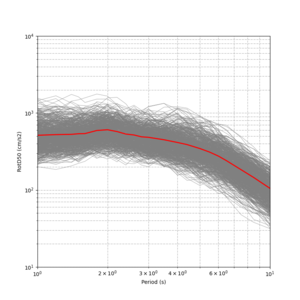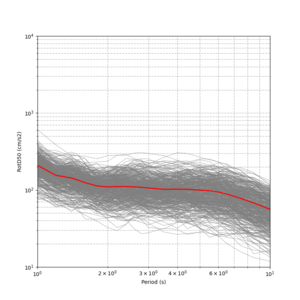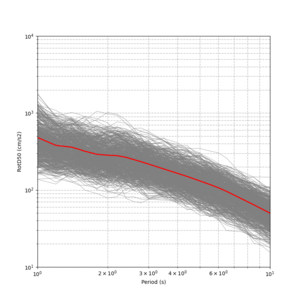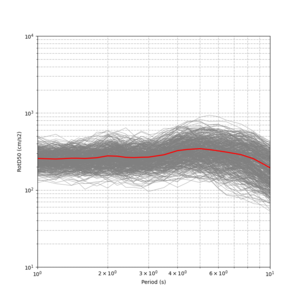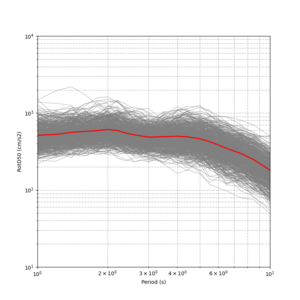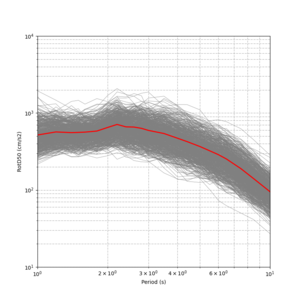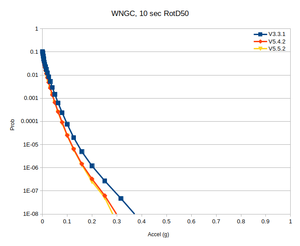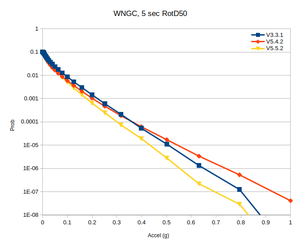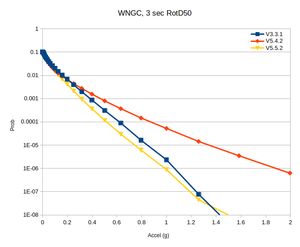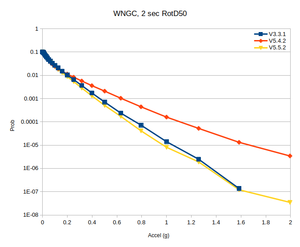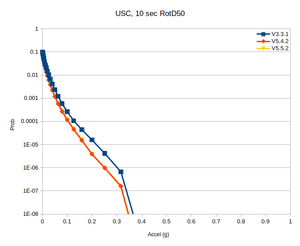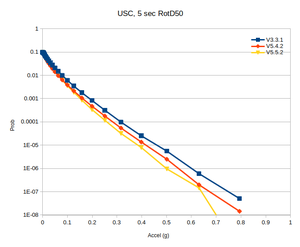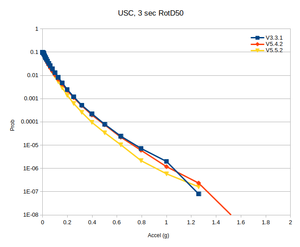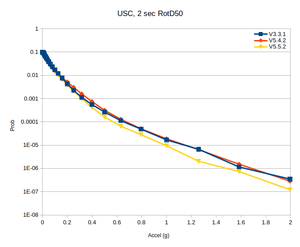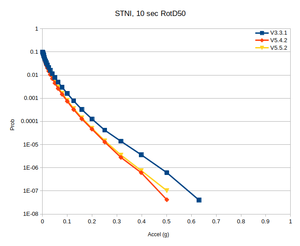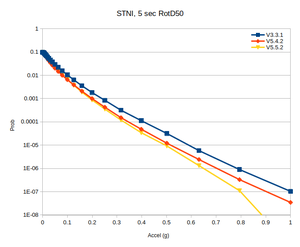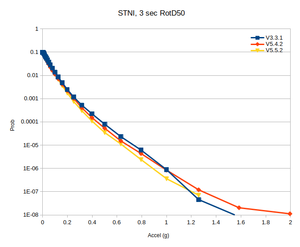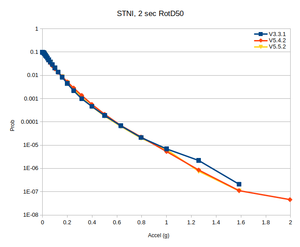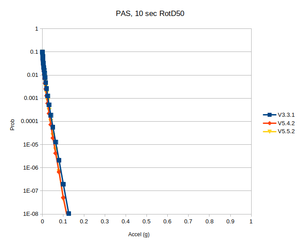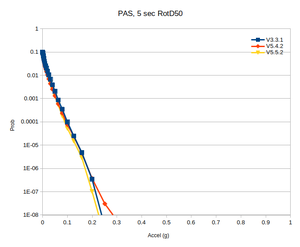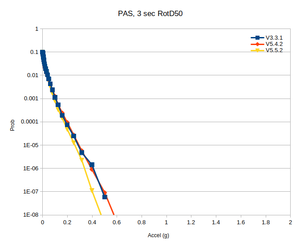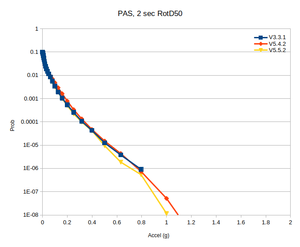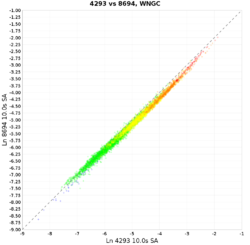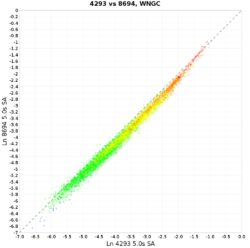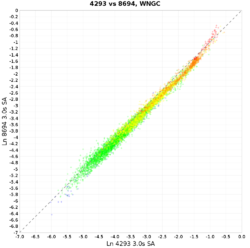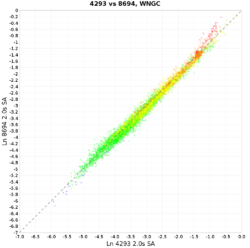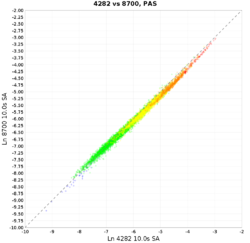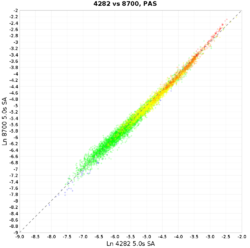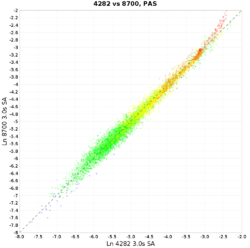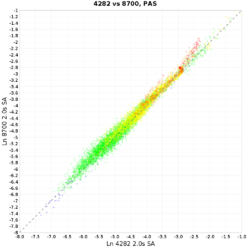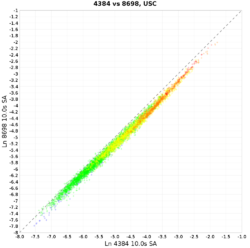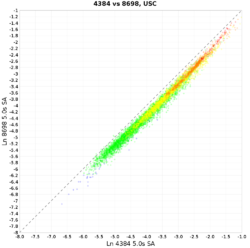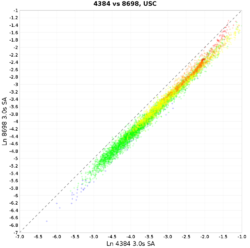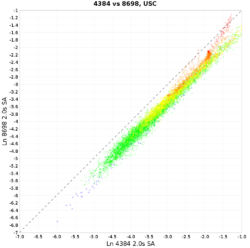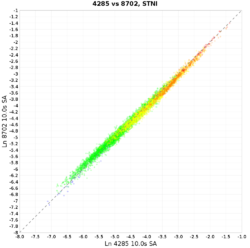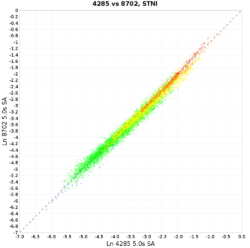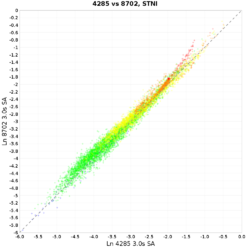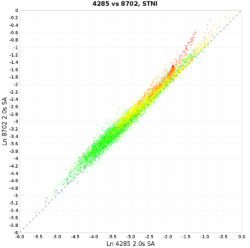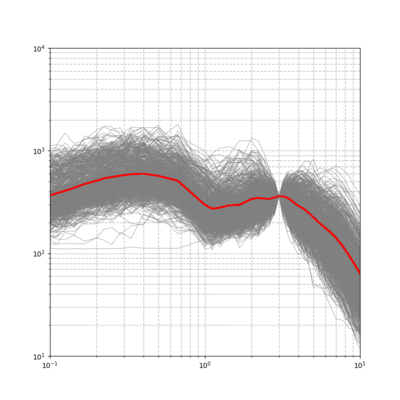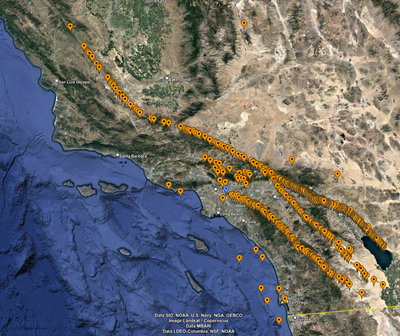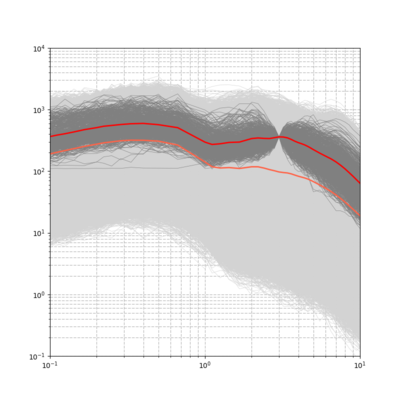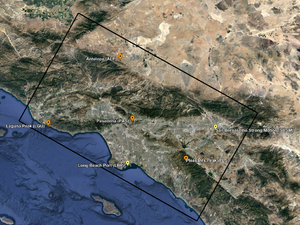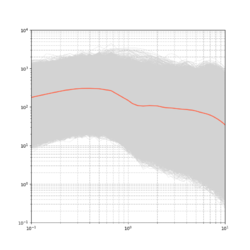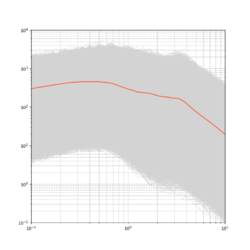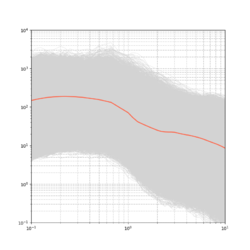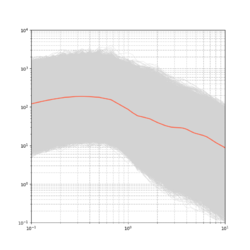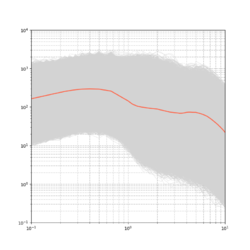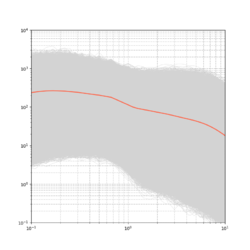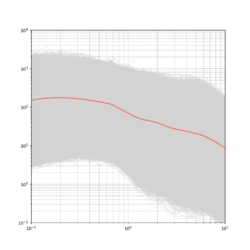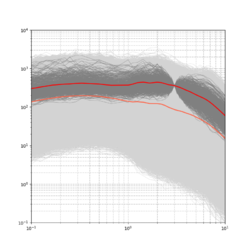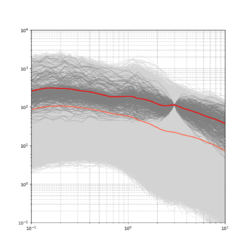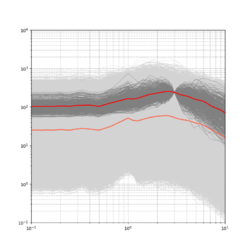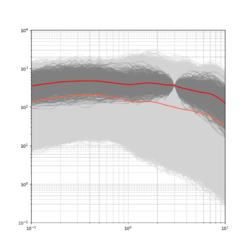CyberShake Study 22.12
CyberShake Study 22.12 is a running study in Southern California which will include deterministic low-frequency (0-1 Hz) and stochastic high-frequency (1-50 Hz) simulations. We will use the Graves & Pitarka (2022) rupture generator and the high frequency modules from the SCEC Broadband Platform v22.4.
Contents
- 1 Status
- 2 Data Products
- 3 Science Goals
- 4 Technical Goals
- 5 Sites
- 6 Velocity Model
- 7 Rupture Generator
- 8 High-frequency codes
- 9 Spectral Content around 1 Hz
- 10 Seismogram Length
- 11 Validation
- 12 Updates and Enhancements
- 13 Output Data Products
- 14 Computational and Data Estimates
- 15 Lessons Learned
- 16 Stress Test
- 17 Events During Study
- 18 Performance Metrics
- 19 Production Checklist
- 20 Presentations, Posters, and Papers
Status
The stress test is complete, and the main study began on January 17, 2023.
Data Products
Data products will be posted here when the study is completed.
Science Goals
The science goals for this study are:
- Calculate a regional CyberShake model for southern California using an updated rupture generator.
- Calculate an updated broadband CyberShake model.
- Sample variability in rupture velocity as part of the rupture generator.
- Increase hypocentral density, from 4.5 km to 4 km.
Technical Goals
The technical goals for this study are:
- Use an optimized OpenMP version of the post-processing code.
- Bundle the SGT and post-processing jobs to run on large Condor glide-ins, taking advantage of queue policies favoring large jobs.
- Perform the largest CyberShake study to date.
Sites
We will use the standard 335 southern California sites (same as Study 21.12). The order of execution will be:
- Sites of interest
- 20 km grid
- 10 km grid
- Selected 5 km grid sites
Velocity Model
Summary: We are using a velocity model which is a combination of CVM-S4.26.M01 and the Ely-Jordan GTL:
- At each mesh point in the top 700m, we calculate the Vs value from CVM-S4.26.M01, and from the Ely-Jordan GTL using a taper down to 700m.
- We select the approach which produces the smallest Vs value, and we use the Vp, Vs, and rho from that approach.
- We also preserve the Vp/Vs ratio, so if the Vs minimum of 500 m/s is applied, Vp will be scaled so the Vp/Vs ratio is the same.
We are planning to use CVM-S4.26 with a GTL applied, and the CVM-S4 1D background model outside of the region boundaries.
We are investigating applying the Ely-Jordan GTL down to 700 m instead of the default of 350m. We extracted profiles for a series of southern California CyberShake sites, with no GTL, a GTL applied down to 350m, and a GTL applied down to 700m.
Velocity Profiles
Sites (the CVM-S4.26 basins are outlined in red):
These are for sites outside of the CVM-S4.26 basins:
| Site | No GTL | 700m GTL | Smaller value, extracted from mesh |
|---|---|---|---|
| LAPD | |||
| s764 | |||
| s568 | |||
| s035 | |||
| PERR | |||
| MRVY | |||
| s211 |
These are for sites inside of the CVM-S4.26 basins:
| Site | No GTL | 700m GTL | Smaller value |
|---|---|---|---|
| s117 | |||
| USC | |||
| WNGC | |||
| PEDL | |||
| SBSM | |||
| SVD |
Proposed Algorithm
Our proposed algorithm for generating the velocity model is as follows:
- Set the surface mesh point to a depth of 25m.
- Query the CVM-S4.26.M01 model ('cvmsi' string in UCVM) for each grid point.
- Calculate the Ely taper at that point using 700m as the transition depth. Note that the Ely taper uses the Thompson Vs30 values in constraining the taper near the surface.
- Compare the values before and after the taper modification; at each grid point down to the transition depth, use the value from the method with the lower Vs value.
- Check values for Vp/Vs ratio, minimum Vs, Inf/NaNs, etc.
Value constraints
We impose the following constraints on velocity mesh values:
- Vp >= 1700 m/s. If lower, Vp is set to 1700.
- Vs >= 500 m/s. If lower, Vs is set to 500.
- rho >= 1700 km/m3. If lower, rho is set to 1700.
- Vp/Vs >= 1.45. If not, Vs is set to Vp/1.45.
We will add the following additional constraints:
- If Vs<500 m/s, calculate the Vp/Vs ratio, set Vs=500, then set Vp=Vs*(Vp/Vs ratio).
- Apply Vp clamp after Vs check.
Cross-sections
Below are cross-sections of the TEST site velocity model at depths down to 600m for CVM-S4.26.M01, the taper to 700m, the lesser of the two values, and the % difference.
Note that the top two slices use a different color scale.
| Depth | CVM-S4.26.M01 | Ely taper to 700m | Selecting smaller value | % difference, smaller value vs S4.26.M01 |
|---|---|---|---|---|
| 0m (queried at 25m depth) | ||||
| 100m | ||||
| 200m | ||||
| 300m | ||||
| 400m | ||||
| 500m | ||||
| 600m |
Implementation details
To support the Ely taper approach where the smaller value is selected, the following algorithmic changes were made to the CyberShake mesh generation code. Since the UCVM C API doesn't support removing models, we couldn't just add the 'elygtl' model - it would then be included in every query, and we need to run queries with and without it to make the comparison. We also must include the Ely interpolator, since all that querying the elygtl model does is populates the gtl part of the properties with the Vs30 value, and it's the interpolator which takes this and the crustal model info and generates the taper.
- The decomposition is done by either X-parallel or Y-parallel stripes, which have a constant depth. Check the depth to see if it is shallower than the transition depth.
- If so, initialize the elygtl model using ucvm_elygtl_model_init(), if uninitialized. Set the id to UCVM_MAX_MODELS-1. There's no way to get model id info from UCVM, so we use UCVM_MAX_MODELS-1 as it is 29, we are very unlikely to load 29 models, and therefore unlikely to have an id conflict.
- Change the depth value of the points to query to the transition depth. This is because we need to know the crustal model Vs value at the transition depth, so that the Ely interpolator can match it.
- Query the crustal model again, with the modified depths.
- Modify the 'domain' parameter in the properties data structure to UCVM_DOMAIN_INTERP, to indicate that we will be using an interpolator.
- Change the depth value of the points to query back to the correct depth, so that the interpolator can work correctly on them.
- Query the elygtl using ucvm_elygtl_model_query() and the correct depth.
- Call the interpolator for each point independently, using the correct depth.
- For each point, choose to use either the original crustal data or the Ely taper data, depending on which has the lower Vs.
In the future we plan for this approach to be implemented in UCVM, and we can simplify the CyberShake query code.
Impact on hazard
Below are hazard curves calculated with the old approach, and with the implementation described above, for WNGC.
These are scatterplots for the above WNGC curves.
Rupture Generator
Summary: We are using the Graves & Pitarka generator v5.5.2, the same version as used in the BBP v22.4, for Study 22.12.
Initial Findings
In determining what rupture generator to use for this study, we performed tests with WNGC, USC, PAS, and STNI, and compared hazard curves generated with v5.4.2 to those from Study 15.4:
| Site | 10 sec | 5 sec | 3 sec | 2 sec |
|---|---|---|---|---|
| WNGC | ||||
| USC | ||||
| PAS | ||||
| STNI |
Digging in further, it appears the elevated hazard curves for WNGC at 2 and 3 seconds are predominately due to large-magnitude southern San Andreas events producing larger ground motions.
USC, PAS, and STNI also all see larger ground motions at 2-3 seconds from these same events, but the effect isn't as strong, so it only shows up in the tails of the hazard curves.
We honed in on source 68, rupture 7, a M8.45 on the southern San Andreas which produced the largest WNGC ground motions at 3 seconds, up to 5.1g. We calculated spectral plots for v3.3.1 and v5.4.2 for all 4 sites:
| Site | v3.3.1 | v5.4.2 |
|---|---|---|
| WNGC | ||
| USC | ||
| PAS | ||
| STNI |
v5.5.2
We decided to try v5.5.2 of the rupture generator, which typically has less spectral content at short periods:
| Site | v3.3.1 | v5.4.2 | v5.5.2 |
|---|---|---|---|
| WNGC |
Hazard Curves
Comparison hazard curves for the three rupture generators, using no taper
| Site | 10 sec | 5 sec | 3 sec | 2 sec |
|---|---|---|---|---|
| WNGC | ||||
| USC |
Comparison curves for the three rupture generators, using the smaller value in the velocity model.
| Site | 10 sec | 5 sec | 3 sec | 2 sec |
|---|---|---|---|---|
| STNI | ||||
| PAS |
Scatter Plots
Scatter plots, comparing results with v5.5.2 to results from Study 15.12 by plotting the mean ground motion for each rupture. The colors are magnitude bins (blue: <M6.5; green: M6.5-7; yellow: M7-7.5; orange: M7.5-8; red: M8+).
| Site | 10 sec | 5 sec | 3 sec | 2 sec |
|---|---|---|---|---|
| WNGC | ||||
| PAS | ||||
| USC | ||||
| STNI |
We also modified the risetime_coef to 2.3, from the previous default of 1.6.
High-frequency codes
For this study, we will use the Graves & Pitarka high frequency module (hb_high) from the Broadband Platform v22.4, hb_high_v6.0.5. We will use the following parameters. Parameters in bold have been changed for this study.
| Parameter | Value |
|---|---|
| stress_average | 50 |
| rayset | 2,1,2 |
| siteamp | 1 |
| nbu | 4 (not used) |
| ifft | 0 (not used) |
| flol | 0.02 (not used) |
| fhil | 19.9 (not used) |
| irand | Seed used for generating SRF |
| tlen | Seismogram length, in sec |
| dt | 0.01 |
| fmax | 10 (not used) |
| kappa | 0.04 |
| qfexp | 0.6 |
| mean_rvfac | 0.775 |
| range_rvfac | 0.1 |
| rvfac | Calculated using BBP hfsims_cfg.py code |
| shal_rvfac | 0.6 |
| deep_rvfac | 0.6 |
| czero | 2 |
| c_alpha | -99 |
| sm | -1 |
| vr | -1 |
| vsmoho | 999.9 |
| nlskip | -99 |
| vpsig | 0 |
| vshsig | 0 |
| rhosig | 0 |
| qssig | 0 |
| icflag | 1 |
| velname | -1 |
| fa_sig1 | 0 |
| fa_sig2 | 0 |
| rvsig1 | 0.1 |
| ipdur_model | 11 |
| ispar_adjust | 1 |
| targ_mag | -1 |
| fault_area | -1 |
| default_c0 | 57 |
| default_c1 | 34 |
Spectral Content around 1 Hz
We investigated the spectral content of the Broadband CyberShake results in the 0.5-3 second range, to look for any discontinuities.
The plot below is from WNGC, Study 15.12 (run ID 4293).
Below is a plot of the hypocenters from the 706 rupture variations which meet the target.
These events have a different distribution than the rupture variations as a whole.
| Fault | Percent of target RVs | Percent of all RVs |
|---|---|---|
| San Andreas | 60 | 44 |
| Elsinore | 21 | 9 |
| San Jacinto | 13 | 8 |
| Other | 6 | 39 |
Additionally, 88% of the selected events have a magnitude greater than the average for their source. 4% are average, and 8% are lower.
Below is a spectral plot but which includes all rupture variations and the overall mean (in orange).
Additional Sites
We created spectral plots for 7 additional sites (STNI, SBSM, PAS, LGU, LBP, ALP, PLS), located here:
| STNI | SBSM | PAS | LGU | LBP | ALP | PLS |
|---|---|---|---|---|---|---|
v5.5.2
We created spectral plots using results produced with rupture generator v5.5.2. These results have a much less noticeable slope around 1 sec.
| WNGC | PAS | USC | STNI |
|---|---|---|---|
Seismogram Length
Originally we proposed a seismogram length of 500 sec. We examined seismograms for our most distance event-station pairs for this study and concluded that most stop having any meaningful signal by around 325 sec. Thus, we are reducing the seismogram length to 400 sec to ensure some margin of error.
Validation
The extensive validation efforts performed in preparation for this study are documented in Broadband_CyberShake_Validation.
Updates and Enhancements
- New velocity model created, including Ely taper to 700m and tweaked rules for applying minimum values.
- Updated to rupture generator v5.5.2.
- CyberShake broadband codes now linked directly against BBP codes
- Added -ffast-math compiler option to hb_high code for modest speedup.
- Migrated to using OpenMP version of DirectSynth code.
- Optimized rupture generator v5.5.2.
- Verification was performed against historic events, including Northridge and Landers.
Lessons Learned from Previous Studies
- Create new velocity model ID for composite model, capturing metadata. We created a new velocity model ID to capture the model used for Study 22.12.
- Clear disk space before study begins to avoid disk contention. On moment, we migrated old studies to focal and optimized. At CARC, we migrated old studies to OLCF HPSS.
- In addition to disk space, check local inode usage. CARC and shock checked; plenty of inodes are available.
Output Data Products
File-based data products
We plan to produce the following data products, which will be stored at CARC:
Deterministic
- Seismograms: 2-component seismograms, 8000 timesteps (400 sec) each.
- PSA: X and Y spectral acceleration at 44 periods (10, 9.5, 9, 8.5, 8, 7.5, 7, 6.5, 6, 5.5, 5, 4.8, 4.6, 4.4, 4.2, 4, 3.8, 3.6, 3.4, 3.2, 3, 2.8, 2.6, 2.4, 2.2, 2, 1.66667, 1.42857, 1.25, 1.11111, 1, .66667, .5, .4, .33333, .285714, .25, .22222, .2, .16667, .142857, .125, .11111, .1 sec)
- RotD: PGV, and RotD50, the RotD50 azimuth, and RotD100 at 25 periods (20, 15, 12, 10, 8.5, 7.5, 6.5, 6, 5.5, 5, 4.4, 4, 3.5, 3, 2.8, 2.6, 2.4, 2.2, 2, 1.7, 1.5, 1.3, 1.2, 1.1, 1)
- Durations: for X and Y components, energy integral, Arias intensity, cumulative absolute velocity (CAV), and for both velocity and acceleration, 5-75%, 5-95%, and 20-80%.
Broadband
- Seismograms: 2-component seismograms, 40000 timesteps (400 sec) each.
- PSA: X and Y spectral acceleration at 44 periods (10, 9.5, 9, 8.5, 8, 7.5, 7, 6.5, 6, 5.5, 5, 4.8, 4.6, 4.4, 4.2, 4, 3.8, 3.6, 3.4, 3.2, 3, 2.8, 2.6, 2.4, 2.2, 2, 1.66667, 1.42857, 1.25, 1.11111, 1, .66667, .5, .4, .33333, .285714, .25, .22222, .2, .16667, .142857, .125, .11111, .1 sec)
- RotD: PGA, PGV, and RotD50, the RotD50 azimuth, and RotD100 at 66 periods (20, 15, 12, 10, 8.5, 7.5, 6.5, 6, 5.5, 5, 4.4, 4, 3.5, 3, 2.8, 2.6, 2.4, 2.2, 2, 1.7, 1.5, 1.3, 1.2, 1.1, 1, 0.85, 0.75, 0.65, 0.6, 0.55, 0.5, 0.45, 0.4, 0.35, 0.3, 0.28, 0.26, 0.24, 0.22, 0.2, 0.17, 0.15, 0.13, 0.12, 0.11, 0.1, 0.085, 0.075, 0.065, 0.06, 0.055, 0.05, 0.045, 0.04, 0.035, 0.032, 0.029, 0.025, 0.022, 0.02, 0.017, 0.015, 0.013, 0.012, 0.011, 0.01)
- Durations: for X and Y components, energy integral, Arias intensity, cumulative absolute velocity (CAV), and for both velocity and acceleration, 5-75%, 5-95%, and 20-80%.
Database data products
We plan to store the following data products in the database on moment:
Deterministic
- RotD50 and RotD100 for 6 periods (10, 7.5, 5, 4, 3, 2)
- Duration: acceleration 5-75% and 5-95%, for both X and Y
Broadband
- RotD50 and RotD100 for PGA, PGV, and 19 periods (10, 7.5, 5, 4, 3, 2, 1, 0.75, 0.5, 0.4, 0.3, 0.2, 0.1, 0.075, 0.05, 0.04, 0.03, 0.02, 0.01)
- Duration: acceleration 5-75% and 5-95%, for both X and Y
Computational and Data Estimates
Computational Estimates
We based these estimates on scaling from the average of sites USC, STNI, PAS, and WNGC, which have within 1% of the average number of variations per site.
| UCVM runtime | UCVM nodes | SGT runtime (both components) | SGT nodes | Other SGT workflow jobs | Summit Total | |
|---|---|---|---|---|---|---|
| 4 site average | 436 sec | 50 | 3776 sec | 67 | 8700 node-sec | 78.8 node-hrs |
78.8 node-hrs x 335 sites + 10% overrun margin gives us an estimate of 29.0k node-hours for SGT calculation.
| DirectSynth runtime | DirectSynth nodes | Summit Total | |
|---|---|---|---|
| 4 site average | 31000 | 92 | 792 |
792 node-hours x 335 sites + 10% overrun margin gives an estimate of 292k node-hours for post-processing.
| PMC runtime | PMC nodes | Summit Total | |
|---|---|---|---|
| 4 site average | 31500 | 92 | 805 |
805 node-hrs x 335 sites + 10% overrun margin gives an estimate of 297k node-hours for broadband calculations.
Data Estimates
Summit
On average, each site contains 626,000 rupture variations.
These estimates assume a 400 sec seismogram.
| Velocity mesh | SGTs size | Temp data | Output data | |
|---|---|---|---|---|
| 4 site average (GB) | 177 | 1533 | 1533 | 225 |
| Total for 335 sites (TB) | 57.8 | 501.4 | 501.4 | 73.6 |
CARC
We estimate 225.6 GB/site x 335 sites = 73.8 TB in output data, which will be transferred back to CARC. After transferring Study 13.4 and 14.2, we have 66 TB free at CARC, so additional data will need to be moved.
shock-carc
The study should use approximately 737 GB in workflow log space on /home/shock. This drive has approximately 1.5 TB free.
moment database
The PeakAmplitudes table uses approximately 99 bytes per entry.
99 bytes/entry * 34 entries/event (11 det + 25 stoch) * 622,636 events/site * 335 sites = 654 GB. The drive on moment with the mysql database has 771 GB free, so we will plan to migrate Study 18.8 off of moment to free up additional room.
Lessons Learned
Stress Test
As of 12/17/22, user callag has run 13627 jobs and consumed 71936.9 node-hours on Summit.
/home/shock on shock-carc has 1544778288 blocks free.
The stress test started at 15:47:42 PST on 12/17/22.
The stress test completed at 13:32:20 PST on 1/7/23.
As of 1/10/23, user callag has run 14204 jobs and consumed 115430.8 node-hours on Summit.
This works out to 2174.7 node-hours per site, 29.7% more than the initial estimate of 1675.8.
Issues Discovered
- The cronjob submission script on shock-carc was assigning Summit as the SGT and PP host, meaning that summit-pilot wasn't considered in planning.
We removed assignment of SGT and PP host at workflow creation time.
- Pegasus was trying to transfer some files from CARC to shock-carc /tmp. Since CARC is accessed via the GO protocol, but /tmp isn't served through GO, there doesn't seem to be a way to do this.
Reverted to custom pegasus-transfer wrapper until Pegasus group can modify Pegasus so that files aren't transferred to /tmp which aren't used in the planning process. This will probably be some time in January.
- Runtimes for DirectSynth jobs are much slower (over 10 hours) than in testing.
Increased the permitted memory size from 1.5 GB to 1.8 GB, to reduce the number of tasks and (hopefully) get better data reuse.
- Velocity info job, which determines Vs30, Vs500, and VsD500 for site correction, doesn't apply the taper when calculating these values.
Modified the velocity info job to use the taper when calculating various velocity parameters.
- Velocity params job, which populated the database with Vs30, Z1.0, and Z2.5, doesn't apply the taper.
Modified the velocity params job to use the taper.
- Velocity parameters aren't being added to the broadband runs, just the low-frequency runs.
Added a new job to the DAX generator to insert the Vs30 value from the velocity info file, and copy Z1.0 and Z2.5 from the low-frequency run.
- Minimum Vs value isn't being added to the DB.
Modified the Run Manager to insert a default minimum Vs value of 500 m/s in the DB when a new run is created.
Events During Study
- For some reason (slow filesystem?), several of the serial jobs, like PreCVM and PreSGT, kept failing due to wallclock time expiration. I adjusted the wallclock times up to avoid this.
- In testing, runtimes for the AWP_SGT jobs were around 35 minutes, so we set our pilot job run times to 40 minutes. However, this was not enough time for the AWP_SGT jobs during production, so the work would start over with every pilot job. We increased runtime to 45 minutes, but that still wasn't enough for some jobs, so we increased it again to 60 minutes. This comes at the cost of increased overhead, since the time between the end of the job and the hour is basically lost, but it is better than having jobs never finish.
- We finished the SGT calculations on 1/26.
- On 2/2 we found and fixed an issue with the OpenSHA calculation of locations, which resulted in a mismatch between the CyberShake DB source ID/rupture ID and the source ID/rupture ID in OpenSHA. This affected scatterplots and disaggregation calculations, so all disagg calcs done before this date need to be redone.
Performance Metrics
At the start of the main study, user callag had run 14466 jobs and used 116506.7 node-hours on the GEO112 allocation on Summit.
The main study began on 1/17/23 at 22:34:11 PST.
Production Checklist
Science to-dos
Run WNGC and USC with updated velocity model.Redo validation for Northridge and Landers with updated velocity model, risetime_coef=2.3, and hb_high v6.1.1.For each validation event, calculate BBP results, CS resultsCheck for spectral discontinuities around 1 HzDecide if we should stick with rvfrac=0.8 or allow it to varyDetermine appropriate SGT, low-frequency, and high-frequency seismogram durationsUpdate high-frequency Vs30 to use released Thompson valuesModify RupGen-v5.5.2 into CyberShake APITest RupGen-v5.5.2Update to using v6.1.1 of hb_high.Add metadata to DB for merged taper velocity model.Check boundary conditions.Check that Te-Yang's kernel fix is being used.
Technical to-dos
Integrate refactoring of BBP codes into latest BBP releaseSwitch to using github repo version of CyberShake on SummitUpdate to latest UCVM (v22.7)Switch to optimized version of rupture generatorTest DirectSynth code with fixed memory leak from FronteraSwitch to using Pegasus-supported interface to Globus transfers.Test bundled glide-in jobs for SGT and DirectSynth jobsFix seg fault in PMC running broadband processingUpdate curve generation to generate curves with more pointsTest OpenMP version of DirectSynthMigrate Study 18.8 from moment to focal.Delete Study 18.8 off of moment.Optimize PeakAmplitudes table on moment.Move Study 13.4 output files from CARC to OLCF HPSS.Move Study 14.2 output files from CARC to OLCF HPSS.Switch to using OMP version of DS code by default.Review wiki content.Switch to using Python 3.9 on shock.Confirm PGA and PGV are being calculated and inserted into the DB.Drop rupture variations and seeds tables for RV ID 9, in case we need to put back together for SQLite running.Change to Pegasus 5.0.3 on shock-carc.Tag code.
